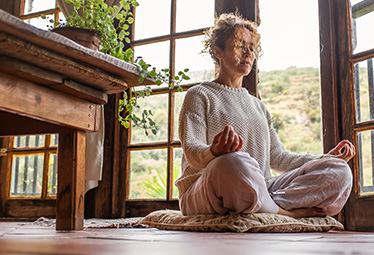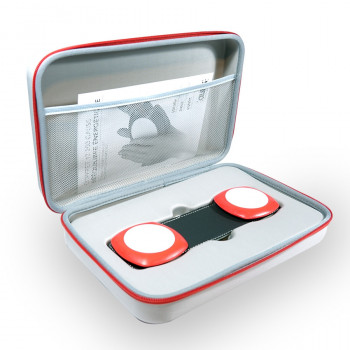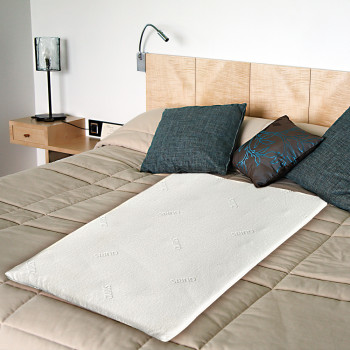 A way of life to calm the body, clear the mind and savour the present moment
A way of life to calm the body, clear the mind and savour the present moment
As we age, our priorities change. With lives often filled with responsibilities, work, raising children and sometimes health concerns, there comes a time when we long for more calm, serenity and presence. This is where meditation and mindfulness come into their own.
These practices, accessible to everyone at any age, offer a gentle and profound way to refocus, calm the mind and rediscover a peaceful relationship with the passing of time.
Why meditate?
Contrary to popular belief, meditation is not just for Buddhist monks. Quite the opposite, in fact. Here's why:
Reduced stress and anxiety
Life rhythm, health, loneliness... Meditation helps to calm negative thoughts and find inner peace.
Improved memory and concentration
Studies show that meditation stimulates attention, slows cognitive decline and enhances brain plasticity, even after the age of 60 or 70.
Relief from chronic pain
By practising mindfulness, we change our relationship with pain, observing it without resisting it, which reduces its perceived intensity.
Better quality sleep
Meditating regularly helps you fall asleep, regulates night-time awakenings and improves recovery.
Self-acceptance and acceptance of ageing
Meditation helps us to look kindly on our bodies, our emotions and the passing of time. It promotes a gentle wisdom, without nostalgia or rejection.
How to start meditating simply?
You don't need to be an expert or sit in the lotus position for an hour! Here is a gentle method to get you started.
Basic exercise: conscious breathing (5 to 10 minutes)
- 1. Sit comfortably with your back straight but relaxed.
- 2. Close your eyes or lower your gaze.
- 3. Focus your attention on your breathing.
- 4. Observe the air entering and leaving your nostrils, your belly rising.
- 5. If thoughts come, that's normal. Welcome them, then gently bring your attention back to your breathing.
Do this in the morning when you wake up or in the evening before going to sleep.
What is mindfulness?
Mindfulness is intentionally focusing your attention on the present moment, without judgement and with kindness. It means experiencing what you are experiencing, here and now, whether it is a pleasant, neutral or difficult moment.
It is often based on meditation techniques, but can also be practised in everyday life: while eating, walking, breathing or listening to someone.
‘Mindfulness is embracing life as it is, with its joys and challenges.’
Mindfulness in everyday life
You can practise mindfulness without having to meditate in silence. Here are a few simple ideas:
- When walking: feel your feet on the ground, listen to the sounds around you, feel the wind.
- When eating: take the time to chew, feel the textures, enjoy the flavours.
- When drinking herbal tea: observe the warmth, the aromas, the relaxation that sets in.
- When listening to someone: be fully present, without interrupting or judging.
These are small rituals that bring great benefits.
And what about magnet therapy?
Magnet therapy, which acts on the body's energy balance using therapeutic magnets, perfectly complements meditation:
- It promotes muscle relaxation, which is ideal before a session. It improves the circulation of vital energy, which is often blocked by stress.
- Some people use magnetic cushions or mats during meditation to enhance the feeling of well-being.
A harmonious combination of natural science and subtle energy.



